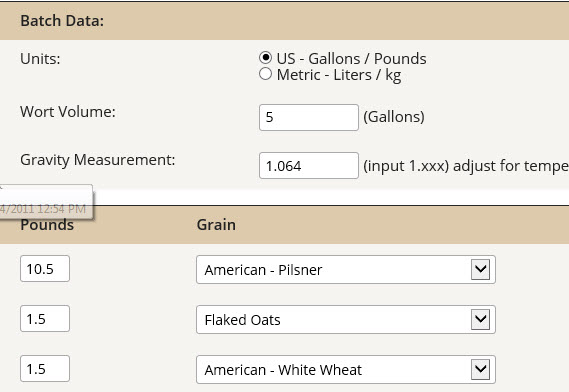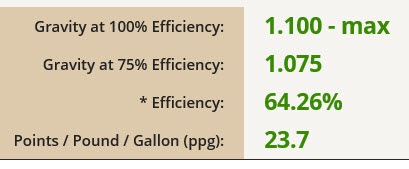Smellyglove
Well-Known Member
- Joined
- May 17, 2013
- Messages
- 2,807
- Reaction score
- 807
True. But, here's how I see the issue. Let's say that you tell beersmith that you have a brewhouse efficiency of 70%. This number includes how much wort you (do or do not) throw out. If you leave wort in your kettle your brewhouse efficiency drops. This is why I asked about brewhouse v. mash.
Bottom line, leaving behind a gallon of wort hurts your bh efficiency. So . . . you lie to your software and say, my brewhouse efficiency is 70%, it says, ok with all that water and grain at 70% efficiency here's how much grain you need to use. But, your brewhouse efficiency is not 70%. Leaving out a gallon of wort to get to 5 means you are losing 1 gallon of the six you made. That alone is a 17% loss in efficiency. Add in all the other factors, such as mash eff, and there you are.
Consider you mash efficiency. That is the number that tells you how you did on your mash. Is that number good? If so, then you are doing great with your mash (grist crush, stirring, pH, etc., etc.) After that, your decision to throw out good wort is just fine. Just realize that it impacts your BH eff. Set your BH eff correctly in the software, and watch yourself hit your OG.
I do know that BH eff is affected by collecting wort. What I don't know for certain if it is this simple. But, I suspect this is a good illustration. Just looking at mash eff of 80%. Take that by 83% (throwing out a gallon out of the six you have). That is 66.4%. I'm guessing that doesn't account for a few other losses.
Don't think about brewhouse efficiency. That number is imo pretty useless as it only tells you how much wort is not making it through the pipeline.
Since you use Beersmith (I guess?). You input your losses, and manipulate the brewhouse efficiency so estimated mash efficiency is equal to your expected mash efficiency. The mash efficiency is what's important. If you leave a lot of wort behind you need to make a bigger wort, since some wort doesn't make it. By diluting with water to hit the volume your SG/OG will go down. By using more water and malt (basically making more wort of the correct SG), and if your losses are correctly entered into Beersmith, you will end up with a correct OG and Volume.
Last edited:





